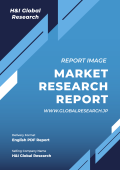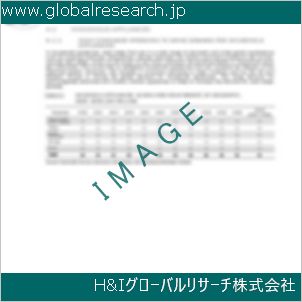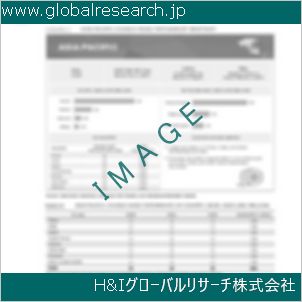目次
第1章. グローバル即用接着剤市場レポートの範囲と方法論
1.1. 研究目的
1.2. 研究方法論
1.2.1. 予測モデル
1.2.2. デスクリサーチ
1.2.3. トップダウンとボトムアップアプローチ
1.3. 研究の属性
1.4. 研究の範囲
1.4.1. 市場定義
1.4.2. 市場セグメンテーション
1.5. 研究の仮定
1.5.1. 包含と除外
1.5.2. 制限事項
1.5.3. 調査対象期間
第2章 執行要約
2.1. CEO/CXOの視点
2.2. 戦略的洞察
2.3. ESG分析
2.4. 主要な発見
第3章. グローバル即用接着剤市場動向分析
3.1. グローバル即用接着剤市場を形作る市場要因(2024-2035)
3.2. 成長要因
3.2.1. 製造業界における迅速な生産サイクルの需要増加
3.2.2. 医療・電子産業における採用の拡大
3.3. 制約
3.3.1. シアンアクリレートに関連する健康と環境への懸念
3.3.2. 高温用途における瞬間接着剤の熱耐性の限界
3.4. 機会
3.4.1. 低臭気・柔軟性のある配合技術の開発
3.4.2. 拡大するDIY市場と消費者製品イノベーションの進展
第4章 グローバル瞬間接着剤産業分析
4.1. ポーターの5つの力モデル
4.1.1. 購入者の交渉力
4.1.2. 供給者の交渉力
4.1.3. 新規参入の脅威
4.1.4. 代替品の脅威
4.1.5. 競合企業の競争
4.2. ポーターの5つの力予測モデル(2024–2035)
4.3. PESTEL分析
4.3.1. 政治
4.3.2. 経済的
4.3.3. 社会
4.3.4. 技術的
4.3.5. 環境
4.3.6. 法的
4.4. 主要な投資機会
4.5. 主要な成功戦略(2025年)
4.6. 市場シェア分析(2024–2025)
4.7. グローバル価格分析と動向(2025年)
4.8. 分析家の推奨事項と結論
第5章. グローバル瞬間接着剤市場規模と予測(接着剤タイプ別)2025–2035
5.1. 市場概要
5.2. シアンアクリレート
5.2.1. 主要国別内訳推計と予測(2024–2035年)
5.2.2. 地域別市場規模分析、2025–2035
5.3. アクリル
5.4. エポキシ
5.5. ポリウレタン
第6章. グローバル即乾接着剤市場規模と予測(用途別)、2025–2035
6.1. 市場概要
6.2. 産業用組立
6.3. 消費者向けDIY
6.4. 医療
6.5. 電子機器
第7章. グローバル即乾接着剤市場規模と予測(硬化メカニズム別)2025–2035
7.1. 光硬化型
7.2. 熱硬化型
7.3. 湿気硬化型
第8章. グローバル瞬間接着剤市場規模および予測(粘度別)2025–2035
8.1. 低
8.2. 中
8.3. 高
第9章. グローバル瞬間接着剤市場規模と予測(包装別)2025–2035
9.1. チューブ
9.2. エアゾール
9.3. シリンジ
第10章. グローバル即乾接着剤市場規模と地域別予測(2025~2035年)
10.1. グローバル市場の概要
10.2. 主要なリーダー企業と新興国
10.3. 北米
10.3.1. アメリカ合衆国
10.3.1.1. 接着剤タイプ別市場規模と予測(2025–2035年)
10.3.1.2. 用途別市場規模と予測(2025~2035年)
10.3.2. カナダ
10.3.2.1. 接着剤の種類別市場規模と予測(2025年~2035年)
10.3.2.2. 用途別市場規模と予測(2025年~2035年)
10.4. ヨーロッパ
10.4.1. イギリス
10.4.2. ドイツ
10.4.3. フランス
10.4.4. スペイン
10.4.5. イタリア
10.4.6. ヨーロッパその他
10.5. アジア太平洋
10.5.1. 中国
10.5.2. インド
10.5.3. 日本
10.5.4. オーストラリア
10.5.5. 大韓民国
10.5.6. アジア太平洋地域その他
10.6. ラテンアメリカ
10.6.1. ブラジル
10.6.2. メキシコ
10.7. 中東・アフリカ
10.7.1. アラブ首長国連邦
10.7.2. サウジアラビア
10.7.3. 南アフリカ
10.7.4. 中東・アフリカその他の地域
第11章 競合分析
11.1. 主要な市場戦略
11.2. ヘンケルAG & Co. KGaA
11.2.1. 当社概要
11.2.2. 主要な経営陣
11.2.3. 会社の概要
11.2.4. 財務実績(データ入手状況により異なります)
11.2.5. 製品/サービスポートフォリオ
11.2.6. 最近の動向
11.2.7. 市場戦略
11.2.8. SWOT分析
11.3. 3M社
11.4. H.B.フラー社
11.5. シカAG
11.6. ボスティック・SA
11.7. パーマボンドLLC
11.8. デロ・インダストリアル・アドヘシブズ
11.9. イリノイ・ツール・ワークス・インク
11.10. ハンツマン・コーポレーション
11.11. ピディライト・インダストリーズ・リミテッド
11.12. アベリー・デンニソン・コーポレーション
11.13. アシュランド・グローバル・ホールディングス株式会社
11.14. アルケマ・グループ
11.15. マスターボンド株式会社
11.16. ヘクセル・コーポレーション
11.12. アベリー・デンニソン・コーポレーション
表の一覧
表1. グローバル即乾接着剤市場、レポートの範囲
表2. グローバル即乾性接着剤市場の見積もりおよび予測(地域別)2024–2035
表3. グローバル即用接着剤市場規模推計および予測(接着剤タイプ別)2024–2035
表4. グローバル瞬間接着剤市場規模推計と予測(用途別)2024–2035
表5. グローバル瞬間接着剤市場規模予測(硬化メカニズム別)2024–2035
表6. グローバル瞬間接着剤市場規模予測(粘度別)2024–2035
表7. グローバル瞬間接着剤市場規模予測(包装別)2024–2035
表8. 米国瞬間接着剤市場規模予測(2024~2035年)
表9. カナダ瞬間接着剤市場の見積もりおよび予測、2024–2035
表10. イギリス即乾性接着剤市場規模推計と予測(2024–2035年)
表11. ドイツの即用接着剤市場推定値と予測、2024–2035
表12. フランス即乾接着剤市場の見積もりおよび予測(2024~2035年)
表13. スペインの瞬間接着剤市場推定値と予測、2024–2035
表14. イタリアの瞬間接着剤市場推定値と予測、2024–2035
表15. 欧州その他の地域 瞬間接着剤市場規模推計と予測(2024~2035年)
表16. 中国の瞬間接着剤市場推定値と予測、2024–2035
表17. インドの瞬間接着剤市場推定値と予測、2024–2035
表18. 日本の瞬間接着剤市場推定値と予測、2024–2035
表19. オーストラリアの瞬間接着剤市場規模予測(2024年~2035年)
表20. 韓国の瞬間接着剤市場規模予測(2024年~2035年)
表21. アジア太平洋地域(その他)の瞬間接着剤市場規模推計と予測、2024–2035
表22. ブラジル即乾接着剤市場の見積もりおよび予測、2024–2035
表23. メキシコ即乾接着剤市場の見積もりおよび予測、2024–2035
表24. アラブ首長国連邦(UAE)の瞬間接着剤市場推定値と予測、2024–2035
表25. サウジアラビアの瞬間接着剤市場推定値と予測、2024–2035
表26. 南アフリカ 瞬間接着剤市場規模推計と予測(2024–2035年)
表27. 中東・アフリカ地域(その他)の瞬間接着剤市場規模推計と予測(2024~2035年)
図表一覧
図1. グローバル瞬間接着剤市場、調査方法論
図2. グローバル瞬間接着剤市場、市場推計手法
図3. グローバル市場規模推計および予測方法
図4. グローバル瞬間接着剤市場、2025年の主要動向
図5. グローバル瞬間接着剤市場、成長見通し 2024–2035
図6. グローバル瞬間接着剤市場、ポーターの5つの力モデル
図7. グローバル瞬間接着剤市場、PESTEL分析
図8. グローバル瞬間接着剤市場、バリューチェーン分析
図9. 接着剤タイプ別瞬間接着剤市場、2025年と2035年
図10. 瞬間接着剤市場(用途別)、2025年と2035年
図11. 瞬間接着剤市場(硬化メカニズム別)、2025年と2035年
図12. 即時接着剤市場(粘度別)、2025年と2035年
図13. 瞬間接着剤市場(包装別)、2025年と2035年
図14. 北米瞬間接着剤市場、2025年および2035年
図15. 欧州の瞬間接着剤市場、2025年および2035年
図16. アジア太平洋地域即乾性接着剤市場、2025年および2035年
図17. ラテンアメリカ即乾接着剤市場、2025年と2035年
図18. 中東・アフリカ地域 瞬間接着剤市場、2025年と2035年
図19. グローバル瞬間接着剤市場、企業別市場シェア分析(2025年)
Chapter 1. Global Instant Adhesive Market Report Scope & Methodology
1.1. Research Objective
1.2. Research Methodology
1.2.1. Forecast Model
1.2.2. Desk Research
1.2.3. Top Down and Bottom-Up Approach
1.3. Research Attributes
1.4. Scope of the Study
1.4.1. Market Definition
1.4.2. Market Segmentation
1.5. Research Assumption
1.5.1. Inclusion & Exclusion
1.5.2. Limitations
1.5.3. Years Considered for the Study
Chapter 2. Executive Summary
2.1. CEO/CXO Standpoint
2.2. Strategic Insights
2.3. ESG Analysis
2.4. Key Findings
Chapter 3. Global Instant Adhesive Market Forces Analysis
3.1. Market Forces Shaping The Global Instant Adhesive Market (2024-2035)
3.2. Drivers
3.2.1. Rising demand for rapid production cycles in manufacturing
3.2.2. Increased adoption in medical and electronics industries
3.3. Restraints
3.3.1. Health and environmental concerns associated with cyanoacrylates
3.3.2. Limited heat resistance of instant adhesives in high-temperature applications
3.4. Opportunities
3.4.1. Technological advancements in low-odor and flexible formulations
3.4.2. Emerging DIY markets and growing consumer product innovation
Chapter 4. Global Instant Adhesive Industry Analysis
4.1. Porter’s 5 Forces Model
4.1.1. Bargaining Power of Buyer
4.1.2. Bargaining Power of Supplier
4.1.3. Threat of New Entrants
4.1.4. Threat of Substitutes
4.1.5. Competitive Rivalry
4.2. Porter’s 5 Force Forecast Model (2024–2035)
4.3. PESTEL Analysis
4.3.1. Political
4.3.2. Economical
4.3.3. Social
4.3.4. Technological
4.3.5. Environmental
4.3.6. Legal
4.4. Top Investment Opportunities
4.5. Top Winning Strategies (2025)
4.6. Market Share Analysis (2024–2025)
4.7. Global Pricing Analysis and Trends 2025
4.8. Analyst Recommendation & Conclusion
Chapter 5. Global Instant Adhesive Market Size & Forecasts by Adhesive Type 2025–2035
5.1. Market Overview
5.2. Cyanoacrylate
5.2.1. Top Countries Breakdown Estimates & Forecasts, 2024–2035
5.2.2. Market Size Analysis, by Region, 2025–2035
5.3. Acrylic
5.4. Epoxy
5.5. Polyurethane
Chapter 6. Global Instant Adhesive Market Size & Forecasts by Application 2025–2035
6.1. Market Overview
6.2. Industrial Assembly
6.3. Consumer DIY
6.4. Medical
6.5. Electronics
Chapter 7. Global Instant Adhesive Market Size & Forecasts by Curing Mechanism 2025–2035
7.1. Light Cure
7.2. Heat Cure
7.3. Moisture Cure
Chapter 8. Global Instant Adhesive Market Size & Forecasts by Viscosity 2025–2035
8.1. Low
8.2. Medium
8.3. High
Chapter 9. Global Instant Adhesive Market Size & Forecasts by Packaging 2025–2035
9.1. Tube
9.2. Aerosol
9.3. Syringe
Chapter 10. Global Instant Adhesive Market Size & Forecasts by Region 2025–2035
10.1. Global Market Snapshot
10.2. Top Leading & Emerging Countries
10.3. North America
10.3.1. U.S.
10.3.1.1. Adhesive Type Breakdown Size & Forecasts, 2025–2035
10.3.1.2. Application Breakdown Size & Forecasts, 2025–2035
10.3.2. Canada
10.3.2.1. Adhesive Type Breakdown Size & Forecasts, 2025–2035
10.3.2.2. Application Breakdown Size & Forecasts, 2025–2035
10.4. Europe
10.4.1. UK
10.4.2. Germany
10.4.3. France
10.4.4. Spain
10.4.5. Italy
10.4.6. Rest of Europe
10.5. Asia Pacific
10.5.1. China
10.5.2. India
10.5.3. Japan
10.5.4. Australia
10.5.5. South Korea
10.5.6. Rest of Asia Pacific
10.6. Latin America
10.6.1. Brazil
10.6.2. Mexico
10.7. Middle East & Africa
10.7.1. UAE
10.7.2. Saudi Arabia
10.7.3. South Africa
10.7.4. Rest of Middle East & Africa
Chapter 11. Competitive Intelligence
11.1. Top Market Strategies
11.2. Henkel AG & Co. KGaA
11.2.1. Company Overview
11.2.2. Key Executives
11.2.3. Company Snapshot
11.2.4. Financial Performance (Subject to Data Availability)
11.2.5. Product/Services Portfolio
11.2.6. Recent Development
11.2.7. Market Strategies
11.2.8. SWOT Analysis
11.3. 3M Company
11.4. H.B. Fuller Company
11.5. Sika AG
11.6. Bostik SA
11.7. Permabond LLC
11.8. DELO Industrial Adhesives
11.9. Illinois Tool Works Inc.
11.10. Huntsman Corporation
11.11. Pidilite Industries Limited
11.12. Avery Dennison Corporation
11.13. Ashland Global Holdings Inc.
11.14. Arkema Group
11.15. Master Bond Inc.
11.16. Hexcel Corporation
❖ 免責事項 ❖
http://www.globalresearch.jp/disclaimer












